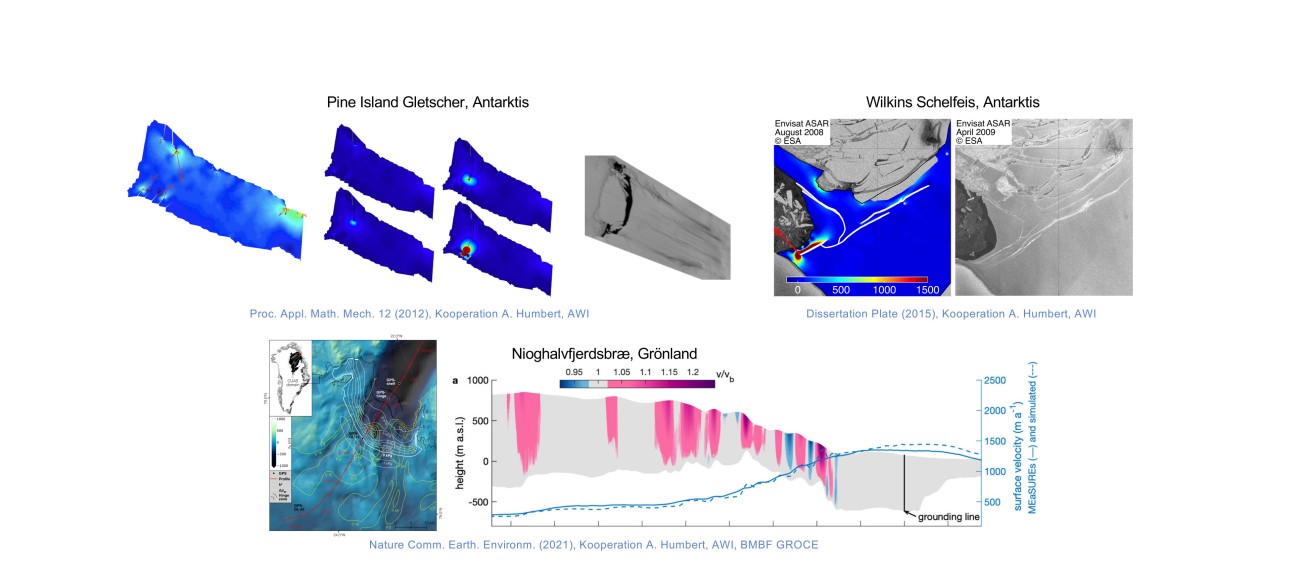In order to estimate the consequences of global warming, an understanding of the deformation behavior of the large ice masses in the Antarctic and in Greenland are indispensable. By means of computational models based on viscous and viscoelastic material models for ice, simulations of the breaking off of large icebergs from shelf ice and swimming glacier lobes were made. Using remote sensing data, land measurings and lab measurings, the simulation models enable the prediction of fracture patterns in heave and calving events. Another central working point is the mathematical modeling of firn densification.
Further information
- Plate, C., Müller, R., Humbert, A., and Gross, D. (2012). Evaluating of the criticality of cracks in ice shelves using finite element simulations. The Cryosphere, 6 (5), 973-984, https://doi.org/10.5194/tc-6-973-2012.
- Plate, C., Gross, D., Humbert, A., and Müller, R. (2012). Analysis of Calving Events in Antarctic Ice Shelves Using Configurational Forces. PAMM, 12 (1), 155-156, https://doi.org/10.1002/pamm.201210068.
- Christmann, J., Plate, C., Müller, R., and Humbert, A. (2016). Viscous and viscoelastic stress states at the calving front of Antarctic ice shelves. Annals of Glaciology, 57 (73), 10-18, https://doi.org/10.1017/aog.2016.18.
- Christmann, J., Helm, V., Khan, S. A., Kleiner, T., Müller, R., Morlighem, M., Neckel, N., Rückamp, M., Steinhate, D., Zeising, O., and Humber, A. (2021). Elastic deformation play a non-negligible role in Greenland's outlet glacier flow. Communications Earth & Environment, 2 (1), 1-12, https://doi.org/10.1038/s43247-021-00296-3.


